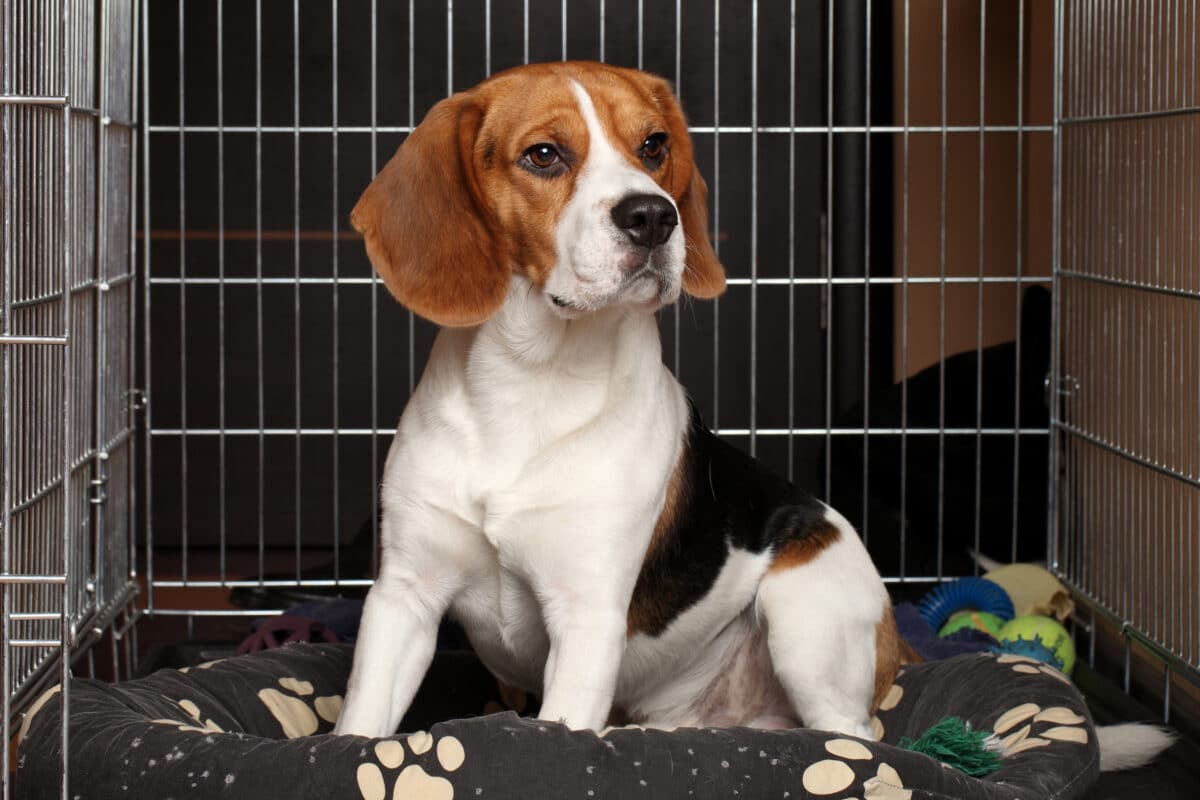Crate training, potty training
Crate Training
Crate Training
By Will Bangura, M.S., CBCC-KA, CPDT-KA, (Dog Behaviorist), Certified Dog Behavior Consultant.
Crate training can be an effective way to housebreak a puppy or provide a safe and secure environment for an older dog. This process can be a positive experience for both you and your pet if done correctly. Here are step-by-step instructions on how to crate train your dog.
Pros and Cons of Crate Training.
Pros:
Crate Training can help with housebreaking and potty training.
It provides a safe and secure environment for your dog.
Crate Training can prevent destructive behaviors such as chewing and digging.
It can help with separation anxiety.
Cons:
Crate Training can be stressful for the dog if done incorrectly.
It can be time-consuming and require patience and consistency.
Crate Training can result in negative behaviors such as barking and whining if done incorrectly.
Here are several practical uses of a crate for a new puppy or older dog:
- Housebreaking: A crate can be used to help with potty training and prevent accidents in the house.
- Sleeping: A crate can provide a safe and secure sleeping space for your dog, which can help with separation anxiety.
- Travel: A crate can provide a safe and secure space for your dog when traveling by car or plane.
- Alone Time: A crate can provide a safe and secure space for your dog to retreat to when they need alone time or a break from the family.
- Preventing destructive behavior: A crate can prevent destructive behaviors such as chewing, digging, and scratching when your dog is unsupervised.
- Training: A crate can be used to help with obedience training, behavior modification, and socialization.
- Recovery from surgery or injury: A crate can provide a safe and secure space for a dog to recover from surgery or injury and prevent them from engaging in destructive behaviors.
- Preventing escape: A crate can prevent dogs from escaping and getting lost, especially during stormy weather or fireworks.
- Protecting furniture and belongings: A crate can protect furniture, carpet, and belongings from being destroyed by a new puppy or older dog.
- Maintaining a routine: A crate can help maintain a routine and provide structure for your dog, especially when transitioning to a new home or environment.
It is important to remember that crates should never be used as a punishment and that dogs should always have access to water, food, and a comfortable place to sleep.
Choosing the Right Crate.
The first step in crate training is to select the right crate. Choosing a crate that is the right size for your dog is important. The crate should be big enough for your dog to stand up, turn around, and lie down comfortably but not so big that they can use one as a bathroom and the other as a bedroom. You can measure your dog or refer to the manufacturer’s size guide to determine the appropriate size crate.
There are several different types of crates available for dogs, including:
- Wire crates: These crates are made of metal wire and have a removable plastic pan for easy cleaning. They are lightweight and portable and offer good ventilation. The cons include that some dogs may be able to escape from them and may be less secure than other types of crates.
- Plastic crates: These crates are made of plastic and are ideal for travel and air travel. They are lightweight and portable and provide good ventilation. However, they may not be as sturdy as other types of crates and may not provide as much visibility for dogs.
- Soft-sided crates: These are made of fabric and are ideal for travel, camping, and small living spaces. They are lightweight and portable but may not provide enough ventilation or security for some dogs.
- Wood crates: These crates are made of wood and are ideal for use as a piece of furniture in the home. They are sturdy and provide good ventilation but may not be as portable as other types of crates.
When determining what kind of crate to use, consider your dog’s size, breed, and behavior, as well as the intended use of the crate. It is also important to consider the crate’s portability, ventilation, and security.
To determine the size of the crate to get, measure your dog from the tip of its nose to the base of its tail, and add about two inches for extra space. The crate should be big enough for your dog to stand up, turn around, and lie down comfortably but not so big that they can use one as a bathroom and the other as a sleeping area.It is important to remember that crates should never be used as a punishment and that dogs should always have access to water, food, and a comfortable place to sleep.
Different Ways to Crate Train.
There are several ways to crate train your dog, each with pros and cons.
Gradual Acclimation: This method involves gradually increasing the amount of time your dog spends in the crate each day. This can be a slow process, but it is less stressful for the dog and can help them feel more comfortable with the crate.
Cold Turkey: This method involves immediately putting your dog in the crate for a set amount of time, typically for several hours at a time. This method can be more stressful for the dog and can result in negative behaviors such as barking and whining.
Step 1: Introduce Your Dog to the Crate.
Once you have the right crate, place it in a central location in your home and put a soft blanket or cushion inside. Encourage your dog to explore the crate on its own by leaving the door open and placing treats inside. You can also feed your dog their meals near the crate to create a positive association.
Step 2: Start with Short Training Sessions.
Once your dog is comfortable with the crate, use it for short training sessions. Start by closing the door while your dog is inside with a treat, and then immediately open it and let them out. Gradually increase the length of time you leave your dog in the crate, always rewarding them with treats and praise when they come out.
Step 3: Gradually Increase the Time.
As your dog becomes more comfortable with being in the crate, gradually increase the length of time they spend inside. This can be done by leaving the house for short periods while they are in the crate or by having them sleep in the crate overnight. It is important to take things slowly and not force your dog to spend long periods in the crate before they are ready.
Step 4: Provide Plenty of Potty Breaks.
Providing plenty of potty breaks for your dog while they are crate training is important. This means taking them outside to go to the bathroom as soon as they are released from the crate and after each meal. This will help them understand that the crate is not a place to go to the bathroom.
Crate Anxiety.
If your puppy or dog experiences anxiety while crated, there are a few things you can do to help:
Gradually increase the amount of time they spend inside the crate: Introduce your dog to the crate slowly and gradually increase the amount of time they spend inside. This can help reduce anxiety and make the experience more positive.
Use positive reinforcement: Reward your dog with treats and praise for being calm and relaxed in the crate. This can help create a positive association with the crate.
Provide plenty of exercise: Ensure your dog gets enough physical and mental stimulation before placing them in the crate. This can help reduce anxiety and restlessness.
Create a calming environment: Place a soft blanket or cushion in the crate and consider using a white noise machine or pheromone diffuser to create a calm and relaxed environment.
Consult with a professional: If your dog’s anxiety persists, consider consulting with a professional dog trainer or dog behaviorist who can help determine the cause of the anxiety and provide a customized training plan.
It is important to remember that every dog is different, and what works for one dog may not work for another. Be patient and consistent, and use positive reinforcement techniques to help your dog feel comfortable and relaxed in the crate.
References:
- American Kennel Club. (n.d.). Crate Training Your Dog. Retrieved February 7, 2023, from https://www.akc.org/expert-advice/training/crate
- American Kennel Club. (2021). Crate Training Your Dog. Retrieved from https://www.akc.org/expert-advice/training/crate-training-your-dog/
- The Humane Society of the United States. (2021). Crate Training. Retrieved from https://www.humanesociety.org/resources/crate-training
- ASPCA. (2021). Crate Training. Retrieved from https://www.aspca.org/pet-care/dog-care/crate-training
- American Society for the Prevention of Cruelty to Animals. (2021). Crate Training Your Dog. Retrieved from https://www.aspca.org/training/crate-training-your-dog
- Veterinary Partner. (2021). Crate Training. Retrieved from https://veterinarypartner.vin.com/default.aspx?pid=19239&id=4951769
- PetMD. (2021). Crate Training Your Dog: A Step-by-Step Guide. Retrieved from https://www.petmd.com/dog/training/evr_dg_crate_training_your_dog
- The American Kennel Club. (2021). How to Crate Train Your Dog. Retrieved from https://www.akc.org/dog-breeds/how-to-crate-train-your-dog/
- American Veterinary Medical Association. (2021). Crate Training Your Puppy or Adult Dog. Retrieved from https://www.avma.org/resources/pet-owners/crate-training-your-puppy-or-adult-dog
- PetCoach. (2021). Crate Training: A Guide for First-Time Owners. Retrieved from https://www.petcoach.co/article/crate-training-a-guide-for-first-time-owners/
- PetFinder. (2021). Crate Training Your Dog: A Comprehensive Guide. Retrieved from https://www.petfinder.com/dog-training/crate-training-your-dog/


